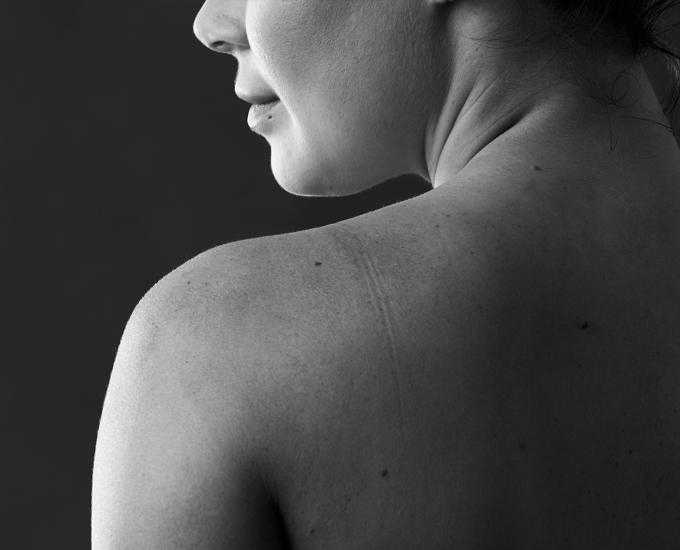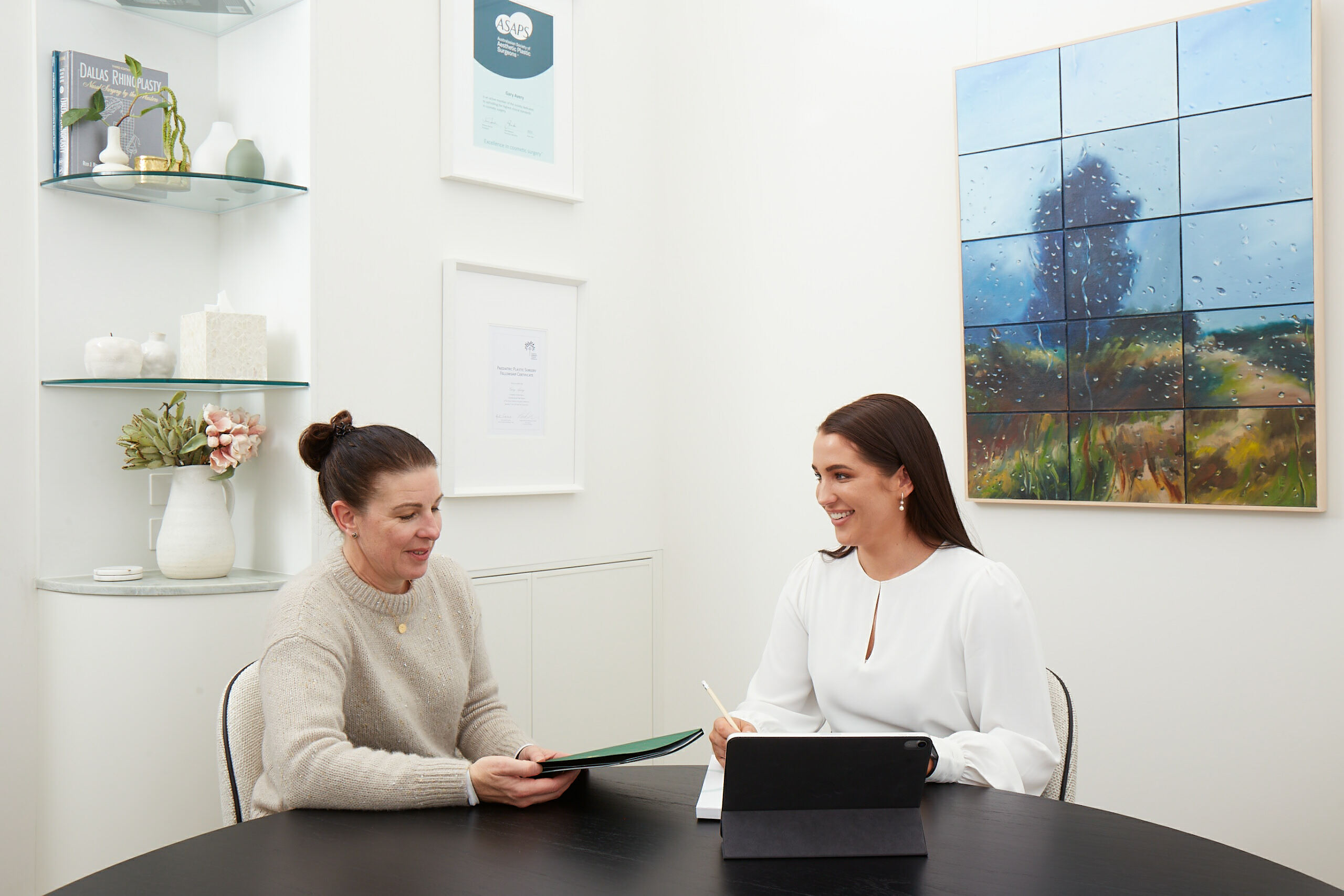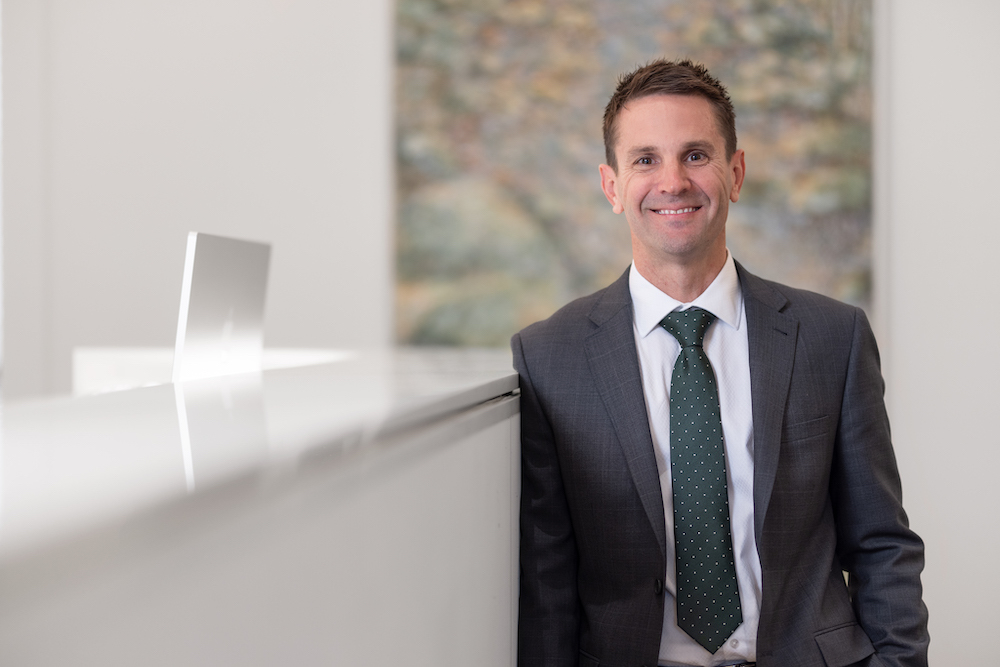
Rhinoplasty involves surgery to the nose to alter the appearance and/or function of the nose. It may repair, reshape, or remove cartilage and/or bone, aiming to correct nose injuries, deviations, or an aspect of the nose you would like altered for aesthetic reasons.
Surgery can be done to address breathing difficulties due to the nose structure or to alter the nasal appearance, or frequently to address both; what we commonly to refer to in plastic surgery as ‘form and function’. Changes in appearance may include straightening and/or reducing the bridge of the nose, reducing nostril size, correcting nose width, and reshaping the nose tip.
Please note that individual results will vary depending on the individual, their genetics and lifestyle factors, and all surgeries have associated risks. Before proceeding with any surgery, it is advisable to seek a second opinion from an appropriately qualified medical practitioner such as a Plastic Surgeon. Dr. Gary Avery (MED0001633092) a registered medical practitioner, with specialist registration in Surgery – Plastic Surgery. Dr Avery is also a member of the two leading professional associations for plastic surgeons in Australia, Australasian Society of Aesthetic Plastic Surgeons (ASAPS) and Australian Society of Plastic Surgeons (ASPS). Their websites provide additional information regarding plastic surgery in Australia that you might find useful, please visit ASAPS and ASPS.
Before, during and after care has been nothing short of helpful, supportive and calming.
Opening the nasal passages and improving breathing may involve surgery to the nasal septum, which is the middle internal wall of the nose that separates the right nasal airway from the left. This surgery is known as a septoplasty and may be performed together with a rhinoplasty, which generally refers to the modification of the external nose that is visible. The combination is often referred to as Septo-Rhinoplasty or Functional Rhinoplasty.
To modify the appearance of the nose, many factors come into play such as certain lines, shadows, and highlights covering the nasal dorsum tip, and base. During rhinoplasty surgery, these proportions can be maintained, emphasised, or created depending on the goals of the patient.
Rhinoplasty can also be considered to correct structural problems that may be causing pain and discomfort. For example, when an individual is facing breathing difficulties, inflammation, or has an issue from a birth, nose deviation and/or injuries; this surgery may relieve these issues.
Patients considering any form of face surgery will need to come in for a consultation with Dr Avery to discuss your expectations, along with the surgical options for how these can be achieved. During your consultation with the Avery team, we will ensure that the surgery you are considering is the appropriate choice for you.
At Avery, we welcome the opportunity to have an open conversation with you to understand the changes you are looking for with surgery. Our patients’ stories matter a great deal to us.
Wherever you are on your personal journey, we would like to assist you. Your reasons for having surgery and your expectations from surgery are important conversations to have before undergoing surgery. Dr Avery will also assess your health and medical history to ensure any surgical procedure you are considering is a safe and appropriate choice for you.

This is Tayla, member of our Avery Care Team.
Every rhinoplasty procedure is highly personalised, with skill and delicacy needed to create a nose that not only functions as it should but fits well in proportion to other facial features.
There may be limits to the changes that can be achieved to the nasal appearance, which is significantly influenced by the size and structure of the nose before surgery, the overlying skin thickness and quality, and the nature of any prior trauma. It can also take up to 12 to 18 months to see the final results of rhinoplasty surgery.
Your Nose Surgery
Your GP or another specialist that knows you well must make a referral to Dr Avery. The decision to have a consultation may be made after talking with family or friends or following your own research into plastic surgery and Dr Avery.
The purpose of your initial consultation with Dr Avery is to discuss your motivations for surgery and expectations from surgery. It is an opportunity to openly communicate what you want to change, alleviate or remove. We will discuss any concerns you may have about your potential surgery and its outcome. We will also collect information that is specific and tailored to you, to add to the knowledge you acquired through your research outside of the consultation process.
When you arrive at Avery, you will check in with our Care Team and complete a medical history form, if not already completed. We encourage you to bring a supportive family member or friend who can remain with you throughout the consultation if you like, and be a sounding board during your decision-making process following the consultation.
The consultation with Dr Avery will include an examination of the area of your body that you are concerned with and considering changing. Our aim will be to determine if plastic surgery can achieve what you hope it will, and if so, what specific plastic surgery procedures will address your concerns and meet your expectations in a realistic way.
Plastic surgery procedures can impact physical appearance and there may be a psychological response to the changes in your body after surgery. Besides the reasons for having plastic surgery, it is important to be fully aware of any potential limitations of the operation and how they apply to your unique situation. This includes the risks of having surgery and all of the possible complications that can occur after surgery, and what can be done if these occur.
We will discuss what the surgery involves, how it relates to you specifically given your uniqueness and current state of health, what the possible risks of the surgery are, and then decide if having the surgery is a safe and appropriate choice for you as an individual.
Your consultation will also include a discussion of the estimated financial implications of having this surgery or surgeries that were discussed with Dr Avery.
After your consultation, our Care Team will be there to talk through any further questions you have, including the cost of the surgery.
At Avery, our goal is to ensure you are equipped with the knowledge needed for you to feel empowered throughout the decision-making process, surgery and post-surgery.
Rhinoplasty is performed under a general anaesthetic, with a local anaesthetic used to help with post-operative pain relief. An incision will be made on the underside of the nose in the bridge of skin between the nostrils, known as the columella, this generally heals very well to be imperceptible at a conversational distance. Further incisions are made inside the nostrils, separating the skin from the bone and cartilage.
Several techniques may be used for reshaping in nose surgery, depending on the original condition of the nose and the desired outcome.
Additional cartilage may be removed from the ear or deep within the nose (the nasal septum) to replace damaged tissue. In some cases, cartilage from a rib, an implant or bone graft may be necessary to repair severe damage.
The surgery will often take between 2-3 hours and can be combined with other procedures as appropriate. Dr Avery will generally have the patient stay one night in the hospital for constant monitoring.
As with all surgical procedures, rhinoplasty surgery does have risks, despite the highest standards of practice. It is not usual for any surgeon to outline every possible side effect or rare complication of a surgical procedure. However, it is important that you have enough information about the most common risks to fully weigh up the benefits, risks, and limitations of surgery.
The following possible complications are listed to inform and not to alarm you. There may be other complications that are not listed. Smoking, obesity, and other significant medical problems will cause greater risk of complications.
Some general risks and possible complications of surgery include, but are not limited to the following:
- Heavy bleeding from an operated site. This may require a blood transfusion.
- Infection that may require treatment with antibiotics or further surgery in some cases.
- Allergic reaction to sutures, dressings or antiseptic solutions.
- The formation of a large blood clot (haematoma) beneath an incision site may require further surgery.
- Complications such as heart attack, pulmonary embolism or stroke may be caused by a blood clot, which can be life threatening.
- Pain, bruising and swelling around the operated site(s).
- Slow healing, often related to smoking or diabetes.
- Short-term nausea following general anaesthesia and other risks related to anaesthesia.
- Tissue cannot heal without scarring and that how one scars is dependent on individual genetic characteristics. Dr Avery will do his best to minimise scarring but cannot control its ultimate appearance.
- Smoking or using nicotine products during the 3–4-week pre-operative and post-operative periods is prohibited as these could dramatically increase the chances of complications.
- All medications I am currently taking, including prescriptions, over the counter remedies, herbal therapies and supplements, aspirin, and any other recreational drug or alcohol use can affect the safety of my surgery.
- There can be no guarantees about the results of any surgery.
Specific risks for rhinoplasty surgery include, but are not limited to the following:
- Bleeding
- Infection
- Asymmetry
- Chronic pain
- Change in sense of smell
- Swelling that can persist for 18 months
- Nasal septal perforation
- Nasal airway alterations
- Further surgery required (early or late)
- Unsatisfactory result / disappointment
- Further recovery time if further surgery is required
- Numbness, can be permanent
- Scarring
- DVT (deep vein thrombosis) – clot in legs or PE (pulmonary embolus) – clot in lungs
- Allergic reactions to tape, suture material, topical preparations
The Australasian Society of Aesthetic Plastic Surgeons (ASAPS) has further information about rhinoplasty surgery including the possible risks for this surgery.
An overnight stay in hospital is often recommended following rhinoplasty surgery. As with any operation, it is recommended that you organise somebody to drive you home from the hospital and have an adult stay with you after surgery.
Following rhinoplasty surgery, you may return to work and normal activities within 1–2 weeks, depending on the complexity of the procedure. A firm supportive splint is generally applied to the nose at the completion of surgery and generally stays in place for 2 weeks which may influence social outings and early return to work. We do not recommend blowing your nose, excessive chewing, swimming, or other activities that may damage the nose until it has completely healed.
There will be some bruising, swelling, and occasional bleeding, which generally subsides about 2 weeks after the operation. Patients recovering from nose surgery will be required to wear a splint and/or nasal packs to provide septum support and help the nose retain its shape while healing. An immediate change is usually evident, but the final appearance of the nose may take up to 18 months to be seen, particularly at the nasal tip, where swelling takes the longest to resolve.
A customised pain relief program will be created for each patient and issued before leaving the hospital. If circumstances change at any stage during the recovery period, then the pain medication can be adjusted accordingly.
Scars from nose surgery are generally not visible, as most incisions are made from the inside of the nose. A small incision will be made at the base of the nose in more complicated procedures. Visible scars can vary depending on the complexity of the rhinoplasty and how well your skin copes with scarring.
The financial aspects of your surgery are as important as the medical elements when planning for surgery. At Avery, the surgeries we offer fall into three different financial categories: Self-funded – aesthetic surgery; self-funded – plastic and reconstructive surgery; and health insured – plastic and reconstructive surgery.
To make sense of these three financial categories, we have created a detailed price guide to help you understand what may or may not be covered by your health insurer/Medicare and your out of pocket expenses.
To download this guide, please click here.
For more information or to book a consultation, please contact our team on 02 4002 4150.
Rhinoplasty Frequently Asked Questions
Some bruising and swelling is expected following rhinoplasty surgery. It may take about 7- 10 days for bruising to resolve and several weeks for the swelling to subside. Elevating your head when sleeping and resting, applying ice, and use of over-the-counter medications may assist in the relief of these symptoms.
Ultimately the decision to explore surgery is yours to make. However, small children require hands-on attention and can be unpredictable in their movements (e.g., throwing their heads back) and being around small children will increase the risk of trauma to your nose post-surgery.
A cosmetic rhinoplasty surgery involves reshaping the nose cartilage and bone to achieve a change in size or shape of the nose. This can also be a reconstructive procedure if required after a trauma to the nose or related to a congenital issue. A functional rhinoplasty refers to surgery to address issues with breathing due to the internal structures of your nose. If your concerns are only related to breathing a consultation with an ear, nose and throat (ENT) surgeon is recommended.
Rhinoplasty surgery involves repairing or reshaping the nose cartilage and bone to achieve a change in size or shape of the nose. This can address issues with breathing due to the internal structures of your nose, however, if your concerns are only related to breathing a consultation with an ear, nose and throat (ENT) surgeon is recommended.
Yes, rhinoplasty surgery involves repairing or reshaping the nose cartilage and bone to achieve a change in size or shape of the nose. There are limitations with any surgery, and with what can be achieved given your unique facial structure. Your expectations and whether surgery can achieve what you are hoping for will be discussed during your consultation with Dr Avery.
Yes, rhinoplasty surgery involves repairing or reshaping the nose cartilage and bone to achieve a change in size or shape of the nose. There are limitations with any surgery, and with what can be achieved given your unique facial structure. Your expectations and whether surgery can achieve what you are hoping for will be discussed during your consultation with Dr Avery.
You should not blow your nose for 7 to 10 days after rhinoplasty surgery to avoid any potential trauma to the nasal structures.
Some bruising and swelling are expected following rhinoplasty surgery. It may take at least 7- 14 days for bruising to resolve and several weeks for the initial swelling to subside, with the final result at around 12-18 months after surgery. Elevating your head when sleeping and resting, applying ice, and use of over-the-counter medications may assist in the relief of these symptoms.
Pain following surgery will vary depending on the extent of surgery. Pain immediately after surgery may be reduced by the use of local anaesthetic at the surgical site given during the surgery. The pain will also be managed with tablets or injections as required. Physical measures such as the dressings and for some surgeries, supportive garments, as well as limited movement and possibly ice packs will all help minimise any pain. Pain is usually well tolerated within a few days after surgery with all these measures. If your pain is increasing following surgery this is usually a sign that you may need a review to ensure your recovery is proceeding as expected.
Dressings and in some cases surgical garments will offer support to the wounds and the areas of your body that are still recovering. You will be also be advised to restrict excessive movement of the surgical area in the first two weeks after surgery. A good general rule throughout your recovery is if an increase in movement or activity does not increase any discomfort or swelling, then it is probably safe and this gradual progression back to ‘normal’ will be encouraged.
Typically, if your surgery is considered cosmetic in nature and does not have a related item number, private health insurance does not cover this surgery. If the surgery is being considered to address significant developmental differences, changes from previous trauma, or to relieve nasal obstruction, then a Medicare item number may apply to the surgery and there may be some cover of this procedure through private health insurance.
Sun exposure can adversely impact early wound healing and have an adverse effect on the pigmentation and long-term quality of you scar(s). All scars should be protected from sun until they are mature, which may not be until one-year post-surgery. A spray tan is okay after a few weeks (once the wound is healed).
Blepharoplasty
Otoplasty / Ear Surgery
View all services
Your initial consultation
During your initial consultation we welcome the opportunity to have an open conversation with you to understand the changes you are looking for with your surgery and talk through any concerns or specific goals you may have.
Your initial consultation will include an examination of the area of concern and we'll work with you to determine if plastic surgery can achieve what you hope it will, and which specific plastic surgery procedures will address your concerns and meet your expectations in a realistic way.

Dr Avery will assess your health and medical history to ensure any surgical procedure you are considering is a safe and appropriate choice for you.